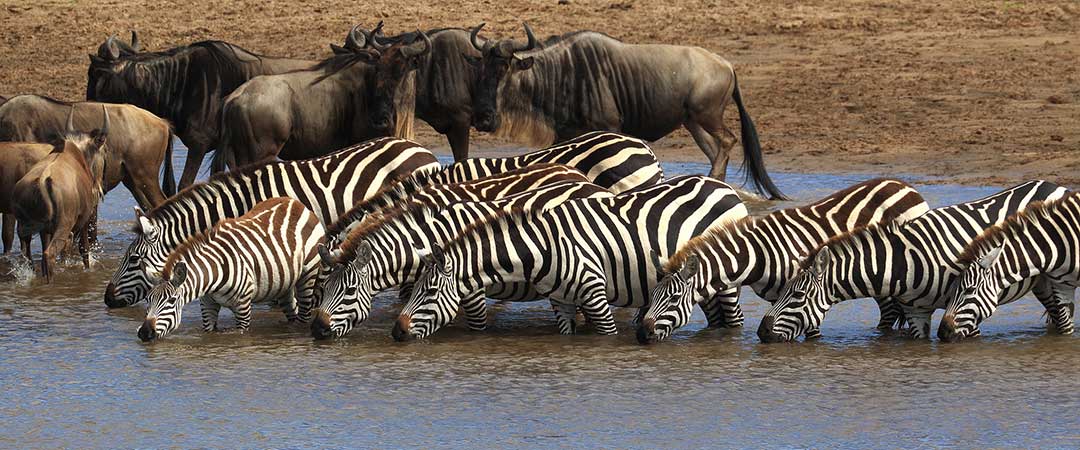A Complete Guide to Tanzania’s Wildlife Paradise
Tanzanias Serengeti National Park is one of the most renowned wildlife reserves in the world. With its vast open plains, dramatic landscapes, and diverse wildlife, the park offers an unparalleled safari experience. Covering an area of approximately 14,750 square kilometers, the Serengeti is a UNESCO World Heritage Site and home to the iconic Great Migration of wildebeest and zebras. In this comprehensive guide, we will explore everything there is to know about Serengeti National Park, from its captivating wildlife to its fascinating ecosystem and conservation efforts.
Geography and Ecosystem of Serengeti National Park
Serengeti National Park is situated in the northwestern part of Tanzania, extending into southwestern Kenya. The park is characterized by vast grasslands, acacia woodlands, rocky outcrops, and riverine forests. It is divided into several regions, each offering unique landscapes and wildlife experiences. The Seronera Valley, in the central part of the park, is known for its abundance of wildlife, while the Western Corridor provides a glimpse of the Great Migration during certain times of the year. The park is also home to the Ngorongoro Conservation Area, which encompasses the Ngorongoro Crater, a natural wonder and prime wildlife habitat.
Wildlife in Serengeti National Park
Serengeti National Park is teeming with an incredible variety of wildlife, making it a haven for wildlife enthusiasts and photographers. The park has its population of African lions, which are known for their remarkable hunting prowess. Other predators such as cheetahs, leopards, and hyenas can also be spotted in the park. Additionally, Serengeti is home to massive herds of wildebeest, zebras, and Thomson’s gazelles that participate in the annual Great Migration, a breathtaking spectacle where millions of animals migrate in search of fresh grazing grounds. Giraffes, elephants, buffalo, and numerous species of antelopes also roam the Serengeti, ensuring an unforgettable wildlife safari experience.
Birdlife in Serengeti National Park
In addition to its impressive mammalian population, Serengeti National Park boasts an extensive array of bird species. Over 500 bird species have been recorded in the park, making it a paradise for birdwatchers. From the majestic African fish eagle and the graceful secretary bird to the vibrant lilac-breasted roller and the colorful southern ground hornbill, the park offers endless opportunities for bird enthusiasts to spot and photograph an incredible variety of avian species. Whether you’re an avid birdwatcher or a casual observer, Serengeti’s rich birdlife will captivate and inspire you.
Conservation and Preservation Efforts in Serengeti National Park
Preserving the ecological integrity of Serengeti National Park is of paramount importance. Various organizations, including the Tanzanian government and international conservation bodies, collaborate to protect the park’s diverse ecosystems and also wildlife populations. Efforts are on anti-poaching initiatives, habitat conservation, community involvement, and sustainable tourism practices. The Serengeti ecosystem, including adjacent protected areas and also reserves, is part of a larger conservation effort to maintain the migratory routes and ensure the long-term survival of the region’s iconic wildlife.
Tanzania’s Serengeti National Park
Best Time to Visit Serengeti National Park
The best time to visit Serengeti National Park largely depends on the specific wildlife experiences you seek. Each season offers unique highlights, making it a year-round destination. The dry season, from June to October, is the peak wildlife-viewing period, as animals congregate around water sources, providing excellent opportunities for sightings. From November to May, the wet season brings lush vegetation and a plethora of newborn animals, including wildebeest calves and zebra foals. The Great Migration can be witnessed in the Serengeti during different months, as the herds move in search of greener pastures. Careful planning and consultation with a reputable safari operator will ensure an unforgettable visit to Serengeti National Park.
Activities and Safari Experiences in Serengeti National Park
Serengeti National Park offers a wide range of activities and safari experiences to cater to every traveler’s preferences. Game drives are the most popular way to explore the park, allowing visitors to venture into different regions and encounter wildlife up close. Hot air balloon safaris offer a unique perspective, allowing you to witness the Serengeti’s breathtaking landscapes and wildlife from above. Walking safaris provide an intimate experience, allowing you to explore the park on foot accompanied by experienced guides. Cultural visits to Maasai communities near the park offer insights into traditional Maasai culture and lifestyle. Whether you choose to embark on a classic game drive or opt for a more adventurous experience, Serengeti National Park promises to deliver unforgettable memories.

Conclusion
Serengeti National Park stands as a testament to the remarkable diversity and beauty of Africa’s wildlife. From the awe-inspiring Great Migration to the iconic predators that roam its plains, the park offers an unparalleled safari experience. Its vast landscapes, rich biodiversity, and conservation efforts make it a must-visit destination for nature lovers, wildlife enthusiasts, and also photographers. By exploring the captivating ecosystem, encountering the incredible wildlife, and also participating in various safari activities. Visitors to Serengeti National Park are guaranteed an unforgettable journey into the heart of Tanzania’s wildlife paradise.
Also, read about these parks in Tanzania:
Check out popular safaris in Tanzania:








